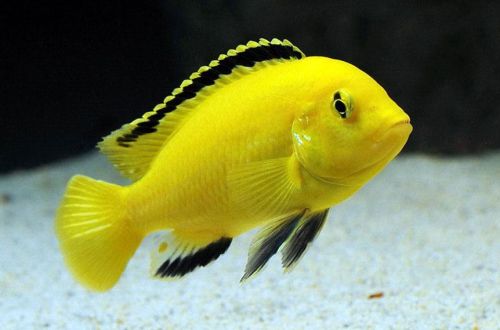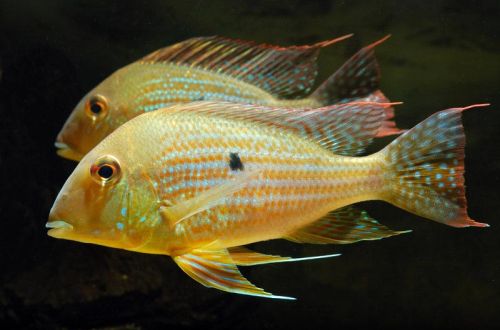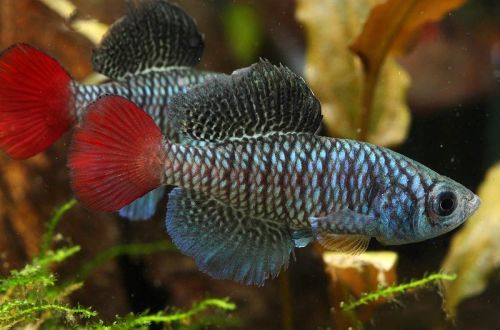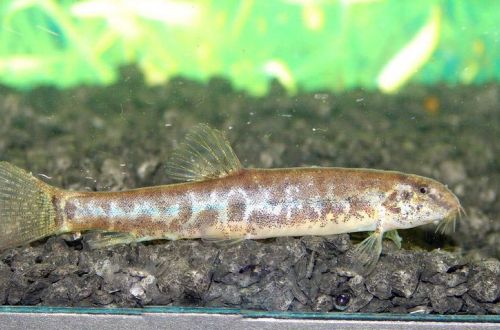
Hummingbird cichlid
Yellow Cichlid, Yellow Labidochromis or Hummingbird Cichlid, scientific name Labidochromis caeruleus, belongs to the Cichlidae family. Due to its bright coloration and not too aggressive disposition, it has become one of the most popular cichlids from Lake Malawi (another name is Nyasa). They belong to the Mbuna group, numbering 13 genera and living in the rocky areas of the lake. Translated from the local dialect, the word “Mbuna” just means “inhabitants of the rocks.”

In nature, there are several natural color forms of this species, but the yellow variety is the most famous. The fish was discovered in 1980 by Stuart Grant and his group of divers, and Pierre Berchard, on his fish farm in Burundi, near Lake Tanganyika, took up mass breeding and supply to the market. Since 1986, the Yellow cichlid has been on the market under the name Labidochromis Tanganyika “Labidochromis tanganicae” and has been mistaken by many as a representative of the lake of the same name, resulting in much confusion. Fortunately, the error was quickly corrected and the Hummingbird Cichlid is now mentioned in most publications as a resident of Lake Malawi.
Requirements and conditions:
- The volume of the aquarium – from 120 liters.
- Temperature – 23-28°C
- pH value – 7.0-8.0
- Water hardness – medium hardness (10–18 dH)
- Substrate type – sand with rocks
- Lighting – moderate
- Brackish water – allowed at a concentration of 1,0002
- Water movement – strong / moderate
- Size — from 8 to 10 cm.
- Nutrition – a combination of high-protein and vegetable feed
- Life expectancy is 6-10 years.
Habitat
Endemic to Lake Malawi in Africa, comes from the northern part. The yellow color form has a narrower range – the border waters between the states of Tanzania and Mozambique, part of the common border of which runs along the lake. They live in rocky coastal areas at a depth of 10 to 30 meters, as well as at the confluence of small streams and rivers. In these places, aquatic plants grow rapidly, mainly Vallisneria.
Description

A stocky fish, has a slightly elongated body, reaches a length of about 8 cm, but in an aquarium it often grows up to 10 cm. It has a long dorsal fin pointed towards the end.
The color is varied, there are white, blue, combined color forms, depending on the region of origin. The bright yellow variety is the most popular. A black stripe stretches along the dorsal fin, and the pectoral fins are partially painted in the same color.
Food
In nature, they feed on algae and their invertebrates. In the home aquarium, all types of live, frozen and dry food are accepted with pleasure. The diet should contain high protein foods combined with herbal supplements in a 50/50 ratio. Daily diet, for example, may consist of bloodworms, daphnia, brine shrimp, combined with dried spirulina – blue-green algae, sold in the form of flakes.
Maintenance and care
Yellow cichlid needs clean water with stable values of hydrochemical parameters. For more information on how to control and change the pH and dGH parameters, see the “Hydrochemical composition of water” section.
High water quality is achieved by its weekly renewal of 10–20% and the installation of an effective filtration system. Choose the most efficient filter from those that are affordable for you, in addition to water purification, it also provides internal flow, which is welcome. Other minimum required equipment includes: aerator, heater and lighting system.
The design should recreate the conditions of the natural habitat. For a group of 3 fish, a tank of 120 liters is required. In the design, a substrate of coarse sand is used. Coral sand is an excellent choice, in addition to its aesthetic beauty, it affects the pH level, maintaining it at a slightly alkaline level. A mandatory attribute is the heaps of rocks and stones with the formation of gorges, grottoes. They serve as hiding places for fish. Several groups of plants of the genus Vallisneria can be used.
Behavior
The most peaceful among the Mbuna, it is not territorial, adapting well with other cichlid species of similar size and temperament. They are only aggressive towards similarly colored fish. They can live alone or in pairs.
Breeding / Reproduction
Successful breeding is possible with the joint maintenance of one male and at least 3 females. Flat stones should be present in the design, they act as a spawning ground. The mating season is accompanied by increased activity of the male, he pursues the females, encouraging them to mate and inviting them to his spawning stone, previously cleared of debris. During this period, its color becomes more intense. During the mating season, feed the fish heavily with meat products. When the female is ready, she accepts courtship and lays 10 to 30 eggs and immediately takes them into her mouth – this is an evolutionary defense mechanism inherent in African lake cichlids. An interesting mechanism is provided for their fertilization; males have a characteristic pattern on the anal fin that resembles eggs. The female mistakenly perceives them as real and tries to take them into her mouth, at this moment the male releases the seed.
The eggs are in the female’s mouth throughout the entire incubation period, which is 3-4 weeks. During this period of time, she cannot eat and lives off her reserves. If there are not enough of them, that is, the fish did not eat well before spawning, then they can throw out the eggs ahead of time or eat them.
After the appearance of the fry, the female continues to care for the offspring for about a week; in case of danger, they will hide in her mouth. Feed juveniles with finely ground dry food and brine shrimp nauplii.
Fish diseases
A fairly hardy species, less susceptible than others to Malawi Bloat disease, which is a potential threat to most cichlids of the lake of the same name. Sensitive to most common aquarium fish diseases caused by unsuitable living conditions. Proper care and the right diet will help prevent health problems for your pets. Read more about symptoms and treatments in the Aquarium Fish Diseases section.
Features
- Aggressive towards similarly colored fish





